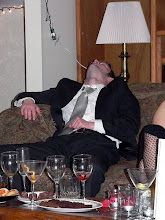 |
| fig. 1: Signs this movie was remade in 1983. |
One consequence of this, however, is by the time that I get to Thunderball, a film that seems on autopilot with regard to so many of the Bond canon's tics, I find I have very little actually to say about it. Particularly down to the fact that this film was remade almost twenty years later as Never Say Never Again, a much more interesting picture in terms of what it had to say about the character by telling almost the exact same story, but aging him ahead.
There were rumors/threats in the 1990's of another Thunderball remake, to be titled Warhead or Warhead 2000 AD. They obviously never came to pass and while it's easy to imagine the mathematics of diminishing returns on these, it would be worth it to see a geriatric Connery go through the undersea motions again, just to find out what we could learn from the juxtaposition between the constraints of the script and the onward press of history.
Most of the set design in this film is unremarkable. Bond spends his time mainly at a health clinic, or in and out of a hotel in the Bahamas. Even Supervillain Emilio Largo (love the name) operates out of a house that would be at home in any American suburb, give or take the pool full of man-eating sharks. Two other locations in this film, however, are much more interesting.
The first is SPECTRE HQ. The top-secret criminal syndicate operates out of a secret room in a humdrum office building in Paris. Turn down the right corridor, push the right button, as happens so often in these movies, and you're transported to a modern, stainless-steel conference hall where the top criminals of the world report to their shadowy, shuttered leader.
 |
| fig. 2: Whose job is it to polish these fixtures? Number 2000? |
By contrast, take a look at the fabulously baroque, old-world hall the Double-0 agents meet in conference with M and some British and NATO bigwigs.
 |
| fig. 3: The Halls of Power |
Contrast Thunderball's slickly ultramodern SPECTRE with the skulking-in-the-shadows version of it in 2015. And compare Spectre's Spectre, too, to what we see of MI:6 in Thunderball. Put a balcony halfway up those long walls and turn out all the lights, the rooms would be strikingly similar. They both represent institutionalized, aging power. In Thunderball, SPECTRE is a kind of nightmarish modern vision of progress, a criminal conglomerate, a monopoly on evil price-fixing heroin and consulting on the British Train Robbery.
This is notably similar to QUANTUM, the ersatz SPECTRE from 2008's Quantum of Solace, who conduct their business meetings through bluetooth ear pieces while watching modernist updates of opera. When Spectre itself came back (un-acronymed, the acronym being a very 1965 way of showing something as forward-thinking), perhaps to set itself apart, and perhaps because Sam Mendes just loves loves him some dramatic shadows, the HQ of this world crime league, now moved to Rome, located to a palace of shadowy affluence.
 |
| fig. 4: Updated |
Since 2008, the organization has regressed. Spectre saw M actively reject the clear-glass modernism of Andrew Scott's MI:5 for the old World War Two tunnel aesthetic from Skyfall. In terms of architecture, then, it's only the obvious money on display in Spectre's digs that separates them from those of the film's MI:6. They have come, in the end, to the same place, signifiers of old empires, their conflict now represented as the blood feud between two brothers. What older story is there?
 |
| Couldn't resist, even if God is displeased with sacrifices of low-hanging fruit. |




No comments:
Post a Comment